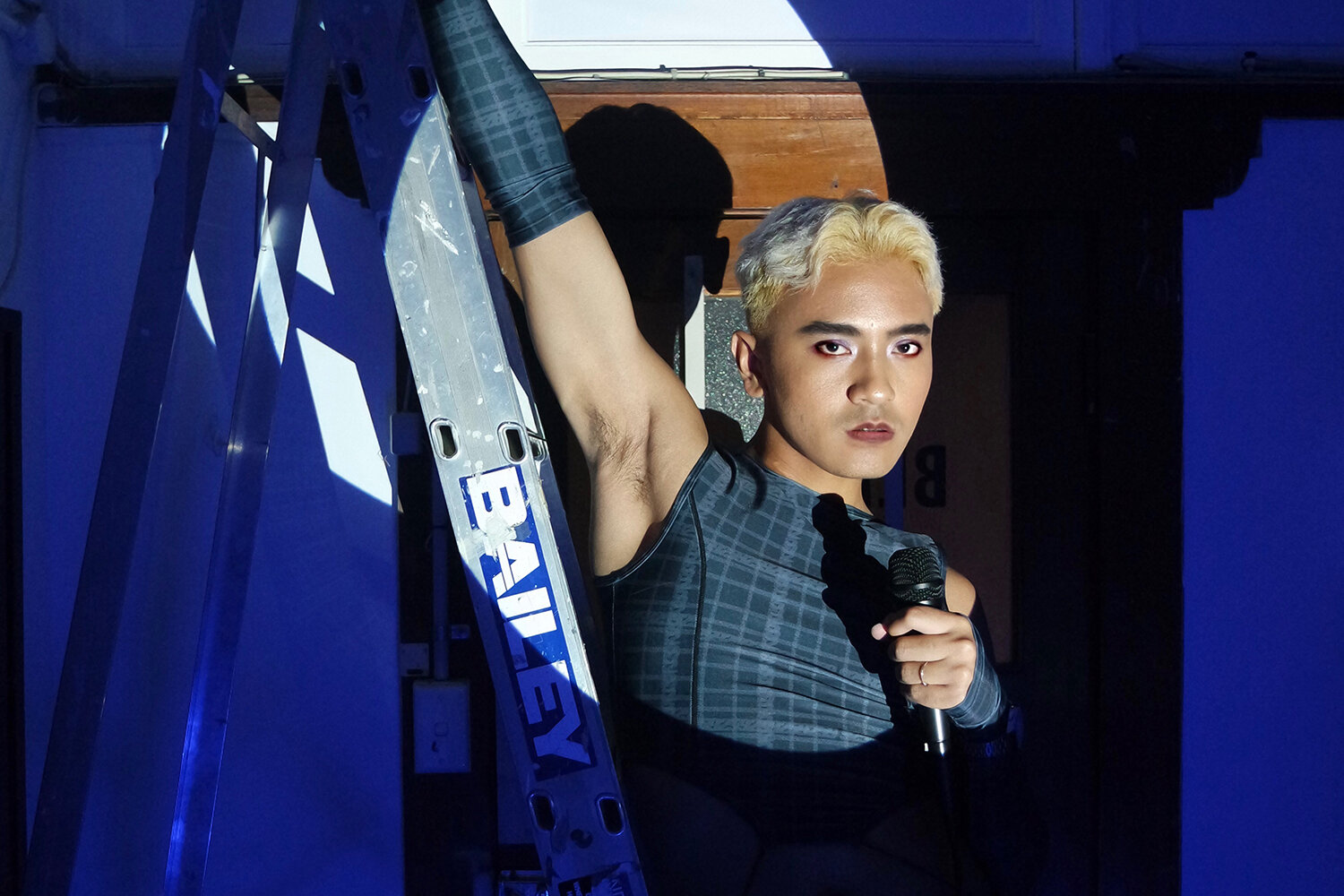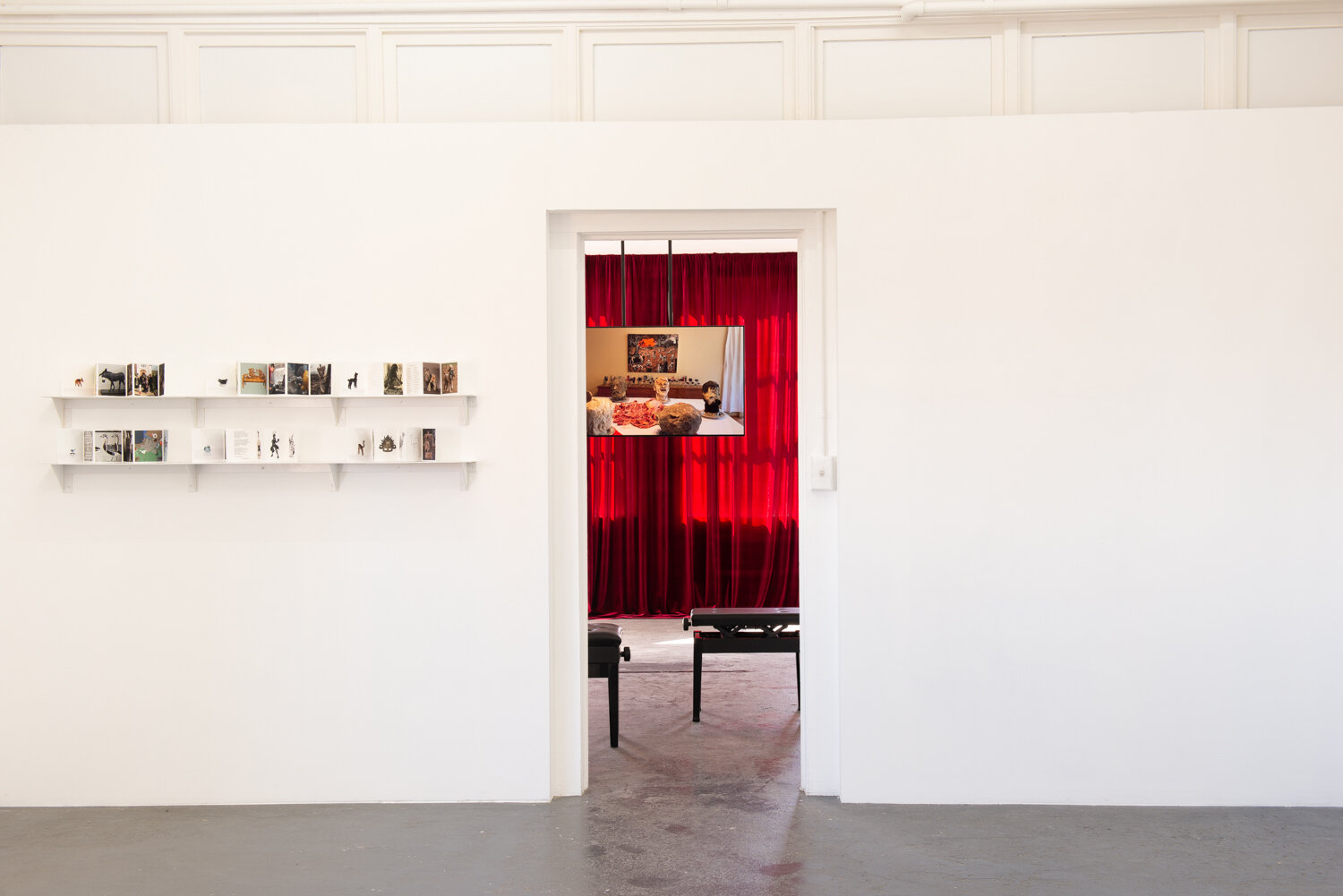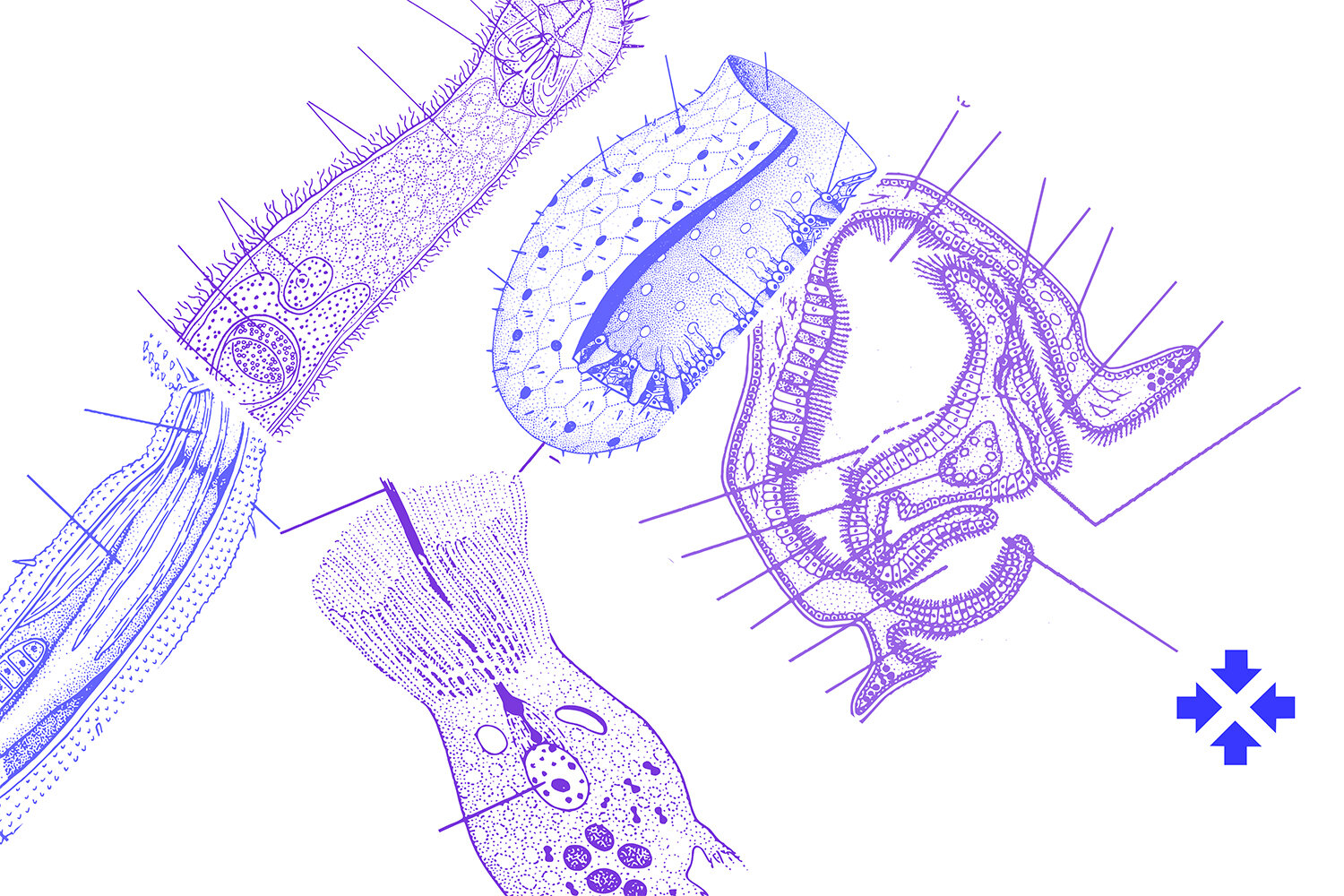Welcome to BLINDSIDE
BLINDSIDE is an independent contemporary art space located in the historic Nicholas Building on Swanston Street in Melbourne’s CBD.
BLINDSIDE has two physical gallery spaces, and also exhibits and delivers programs online and off-site (FaceBook + Instagram)
BLINDSIDE exhibits artwork that pushes boundaries, that is experimental, ephemeral, and often site-specific.
Exhibitions change every three weeks, so there’s always something new to see.
BLINDSIDE’s artists are at all stages of their careers, but we particularly encourage emerging artists and curators.
BLINDSIDE is open every Tuesday to Saturday from 12-6pm.
It is free to visit, and you don’t need to book (unless you’re coming in as part of a school group, but your teacher can book for everyone).
During your visit you’re welcome to take photos for personal use and share them online, tag us using #BLINDSIDEARI and @BLINDSIDE_ARI
~Expect the unexpected~
Getting to BLINDSIDE
The nearest train station is Flinders Street Station, and the nearest tram stops are City Square/Swanston Street (Stop 11) and Town Hall/Collins Street (Stop 6). BLINDSIDE is located within the Free Tram Zone.
You can enter the Nicholas Building from Flinders Lane and from Swanston Street. Both entrances open to Cathedral Arcade (one of Melbourne’s historic arcades), and here you can find elevators to take you to Level 7. You can enter through either glass door, both lead to a hallway that takes you around Level 7. BLINDSIDE is located in Rooms 13 and 14.
BLINDSIDE is conveniently located within walking distance to the NGV (Australia: 4 mins walk away, International: 8 mins walk away), ACCA (16 mins walk away) and a variety of commercial galleries. Other art spaces in the Nicholas Building include Cathedral Cabinet (attached to the cafe in Cathedral Arcade), CAVES, Flinders Lane Gallery, Discordia, Reading Room and Stephen McLaughlan Gallery. The Nicholas Building has a long history of use by creatives, and still is home to many art, design and craft studios. BLINDSIDE has been here since it was established in 2004.
More information about BLINDSIDE
You can access BLINDSIDE’s archive here on the website - it contains images of the exhibitions and artworks that have been at BLINDSIDE over the years.
You can download a pdf of BLINDSIDE’s 10 year publication ‘To The Left And Back Some’ here.
If you have any further questions about BLINDSIDE, check out the Frequently Asked Questions below, and if you don’t find the answer to your question there, please email us at info@BLINDSIDE.org.au.
In addition to exhibitions, BLINDSIDE’s yearly program includes a variety of Public Programs, Artist Talks, and Professional Development Series Workshops. In-person events are often held on Saturday afternoons or between 6-8pm on Thursdays. All students are warmly invited to attend these. Please check our 2021 Program for upcoming exhibitions and events.
You can also check out what we’ve been up to and what’s coming up on our FaceBook + Instagram pages.
Of particular relevance to tertiary students are our annual BLINDSIDE Projects: Summer Studio, Debut, and the Emerging Curator Mentorship.
Summer Studio
Since 2011 the Summer Studio Residency Program has transformed BLINDSIDE’s gallery space into a studio residency, which culminates in a studio exhibition which can be approached as a presentation of residency findings or works in progress rather than as a fully resolved exhibition. This provides a unique platform for the examination of practice and work within a combined studio and exhibition context. In recent years the Summer Studio Residency Program has focused on supporting the practice of new graduates, enabling them to maintain momentum and continue their research or practice-based projects over Summer.
Click the links below to view the SUMMER STUDIO RESIDENCY PROGRAM 2020-2021 outcomes:
Ari Tampubolon | MUSEUM HIGHLIGHTS: THE A.R.I. WORLD TOUR 2020
Chudan Peng | AN EXPLORATION OF THE MANIFESTATIONS OF FUJOSHILISM
BLINDSIDE will call out for applications for Summer Studio 2022 in the second-half of 2021.
In 2022 Summer Studio will be available to visit from Thursday 14 January until Saturday 16 January.
Debut
Debut is the longest running BLINDSIDE Project in our calendar. Since 2005 we have used this exhibition to showcase new work by recent art graduates. This exhibition is internally curated by BLINDSIDE’s Artistic Directors following the end of year grad-shows at Melbourne’s art institutes.
Click HERE to view 2021’s iteration, DEBUT XVII: MADE TO KEEP THE MEMORY ALIVE
Emerging Curator Mentorship
Since 2017 BLINDSIDE has supported the practice of emerging curators through the Emerging Curator Mentorship. This program connects the successful applicant with an experienced mentor and provides funding to support the development of an exhibition at BLINDSIDE.
In 2021, the 2020 Emerging Curator Mentorship Exhibition Micro-(bial) Tenancies, curated by Abbra Kotlarczyk, with mentor Kyla McFarlane, will be available to visit in-gallery from Wednesday 24 February until Saturday 13 March.
Click HERE to view the exhibition page.
BLINDSIDE will call out for applications for the 2021 Emerging Curator Mentorship in the first-half of 2021, with this exhibition available to visit from Wednesday 8 December until Saturday 18 December.
F.A.Qs
How did BLINDSIDE start?
BLINDSIDE was established in 2004 by some art school graduates looking for opportunities to exhibit their art in Melbourne.
These artists found a low rent space in the Nicholas Building, and worked together to make the space ready for artwork and visitors. BLINDSIDE remains in this space, holding between 20-23 in-gallery exhibitions each year. The BLINDSIDE exhibition program has expanded to include online exhibitions and moving image, public screenings, artist residencies, public programs, symposiums, talks, performances, professional development events and our education program.
What type of gallery is BLINDSIDE?
BLINDSIDE is an Artist Run Initiative (ARI) [ARIs are also referred to as artist-run spaces].
ARIs are are often viewed as ‘grass-roots’ establishments on the fringe of the more established public and private galleries and arts organisations. They provide exhibition space for a broad range of art and artists, and support the development and exhibition of experimental art.
As not-for-profit organizations they are largely volunteer-run, although many ARI’s have support to maintain some paid positions.
What type of artwork does BLINDSIDE exhibit?
BLINDSIDE is where you can expect the unexpected. We create dynamic and transformative experiences that activate and expand the possibilities of contemporary art.
As an ARI, BLINDSIDE exhibits work from all fields of creative endeavour, including but not limited to painting, sculpture, sound, installation, moving image, performance, conceptual art, ephemeral art and non-material work.
Many artists are drawn to exhibit at BLINDSIDE because of our focus on art, experimentation and engagement.
Artworks are often:
• Ephemeral
• Site-specific / site-responsive
• Experimental
• Multi-media
• Performative
• Participatory / interactive
• Made from non-traditional art materials or uses traditional art materials in unusual ways
Check out our Archive for examples.
Does BLINDSIDE sell artwork?
BLINDSIDE does not sell artwork during our regular exhibition program, however, it is happy to facilitate artworks being purchased directly from artists.
Artworks are sold during our annual B-SIDE Fundraiser, and as part of our B-SIDE editions program.These artworks are specifically donated by BLINDSIDE artists to be sold to raise funds to support BLINDSIDE’s programs.
Who can exhibit at BLINDSIDE?
BLINDSIDE exhibits artwork by artists at all stages of their careers, including emerging and established artists.
Although we exhibit artists from all over the world, the majority of BLINDSIDE exhibitors are from Victoria due to proximity.
How can I exhibit at BLINDSIDE?
Artists and curators either apply to exhibit (exhibition-by-application) or are invited to be part of BLINDSIDE Projects - our in-house curated programs.
BLINDSIDE calls out for applications for our annual exhibition program once a year. Potential exhibitors then fill out our online application form, which can be accessed via our website during this call out period.
Check out our Apply page for more information about applying to exhibit at BLINDSIDE, and check out our upcoming Program and Archive to see examples of exhibitions that were selected.
If you’d like to apply for an exhibition at BLINDSIDE we encourage you to sign up to our mailing list and follow us on social media (FaceBook, Instagram) to receive announcements.
What type of information does the exhibition application form ask for?
BLINDSIDE’s application forms usually ask for:
A project summary (max. 50 words)
A brief sentence describing your exhibition.
Artist/Curator/Contributor names
Who is going to be contributing to the exhibition? For an exhibition with multiple contributors such as a curated show, it is okay if some people have not confirmed their participation at the time of application submission.
Preferred gallery space?
Gallery 1, 2 or both?
Preferred month/s?
Is there a specific month you have in mind for your exhibition? Particularly if it is to coincide with a festival such as Midsumma, Radiant Pavilion, Melbourne Fashion Week, etc.
Project overview (max. 200 words)
This is a written account of the conceptual premises of your proposed project. What is the idea behind your project? What is the conceptual framework of your project? It could also include a discussion on cultural relevance or timeliness.
Project description (max. 150 words)
A clear written description of the physical form the work will take in the gallery, for example: "Four photographs each 100cm x 80cm will hang on the south wall of the gallery at eye level" or "a projection will play on the wall left of the entrance, the gallery lights will remain off and sound will play from two hidden speakers." Be as clear as possible. Sketches may be submitted for complex installation.
Proposed Public Programs (optional)
Would you like to present any performances, artist/curator talks, forums or workshops, etc. as a component of your program? and if so, please provide a short description
Will you write the exhibition text or will you commission someone else to?
All BLINDSIDE exhibitions also have an accompanying catalogue essay. Applicants need to indicate whether they will be writing their own text or commissioning a writer.
Applicants can also provide different types of support materials including:
A CV or bio for each confirmed contributor
An indicative image that relates to your exhibition, project or your practice for use in marketing material
Up to 10 images or up to 6 images and 6 minutes of sound/video for each participating practitioner
A document that contains a list or description of your linked support material
Who decides what exhibitions are shown?
BLINDSIDE’s Artistic Directors review all of the applications we receive for our annual exhibition program. Check out our People page to learn more about them.
The exhibition-by-application (proposal-based) program accepts applications of all kinds – solo or group exhibitions, curated exhibitions, and exhibitions intended to be part of festivals.
Who curates the exhibitions?
Curators apply to exhibit projects at BLINDSIDE in the same way as artists. The curator works with their selected artists to design an exhibition project.
Each year BLINDSIDE’s exhibition program also includes in-house curated exhibitions or BLINDSIDE Projects, including DEBUT, Emerging Curator Mentorship, First Nations Project, Screen Series and Sound Series. BLINDSIDE Projects are curated BLINDSIDE’s Artistic Directors or by an invited external curator or organisation such as Liquid Architecture or Channels Festival.
How many exhibitions does BLINDSIDE have each year?
BLINDSIDE’s exhibition program begins in mid-late January and continues until mid-December each year.
As there are two physical gallery spaces, there can be two separate exhibitions or one exhibition occupying both spaces at any one time.
Each exhibition lasts for three weeks, with exceptions for some BLINDSIDE Projects which may have shorter exhibition periods. This usually means we have between 20-23 exhibitions a year in the physical gallery spaces, with additional exhibitions and programs online and off-site, including 4 exhibitions in our SATELLITE Program and 3 exhibitions in our MOBILE program each year.
Check out our Exhibition Program for 2021 to see what’s on this year in our physical and online exhibition spaces.
Do I have to pay to exhibit at BLINDSIDE?
If your exhibition is selected by BLINDSIDE for our Exhibition Program it is free to exhibit.
Several years ago artists and curators who had been selected as part of our exhibition-by-application program were required to pay an exhibition fee. As BLINDSIDE has been successful with recent grant applications and received funding to support artists and projects, this cost to exhibitors is currently subsidised, and, in 2021, artists receive a nominal fee to exhibit at BLINDSIDE.
What are BLINDSIDE events?
BLINDSIDE usually hosts a variety of in-gallery, off-site and online events each year. In recent years these events have included artist talks, performances, panel discussions, workshops, and professional development events.
For upcoming events, check out our 2021 Program.
For previous events, check out our Archive.
How can I get involved with BLINDSIDE?
Volunteering is a good way to get to know how a gallery operates, the type of art they exhibit, and to build your professional network in the arts community.
Other opportunities include BLINDSIDE’s Gallery Internships, and the different roles on the Board of Directors. Check out our Apply page for current opportunities.
Do I have to pay to visit BLINDSIDE?
Exhibitions are free to visit and are very rarely ticketed.
When we host events we may require you to register your attendance in advance.
Does BLINDSIDE represent artists?
BLINDSIDE does not represent artists. BLINDSIDE does develop informal ongoing relationships with its artists and curators - our arts community.
Does BLINDSIDE collect artworks?
BLINDSIDE is an exhibition and project platform and does not collect artwork. Read the BLINDSIDE organisational objectives.
Where does BLINDSIDE’s funding come from?
BLINDSIDE is currently supported through grant funding from the City of Melbourne’s Art and Culture Triennial Program and the Victorian Government through Creative Victoria. BLINDSIDE also holds an annual fundraiser, B-SIDE, and accepts donations through the Australian Cultural Fund. The logos of these funding and sponsoring bodies can be found on our website, publications, and newsletter.
How does BLINDSIDE operate?
BLINDSIDE is run by a volunteer Board of Directors and Artistic Directors, and its day-to-day operation is managed by a Gallery Coordinator. There is also a Gallery Technician, a Photographer, Gallery Interns and Gallery Sitters (also referred to as Gallery Invigilators). Every one of these roles is vital to the sustainable operation of BLINDSIDE.
The Board of Directors is composed of executive roles including Chair, Vice-Chair, Secretary, Treasurer and Vice-Treasurer, and specialised coordinator positions including Grants Coordinator, Media Coordinator, Public Programs Coordinator, Fundraising Coordinator and Marketing Coordinator. There are also some Associate Members who assist the Board.
Board Members volunteer their time to BLINDSIDE and are often artists themselves, or curators, arts writers, graphic designers, arts educators, and other arts workers.
The Gallery Coordinator manages the everyday running of BLINDSIDE. They are the main point of contact for the artists and curators who exhibit at BLINDSIDE and they interact regularly with all the other roles at the gallery. In particular, the Photographer, Gallery Technician, Gallery Interns and Gallery Sitters communicate primarily with the Gallery Coordinator as their roles directly relate to the everyday running of BLINDSIDE.
The Photographer documents each exhibition at BLINDSIDE – these images are uploaded to the exhibition page on the BLINDSIDE website, used for social media promotion of exhibitions, and included in our archive.
The Gallery Technician provides installation and de-installation assistance and advice to artists and curators.
Gallery Interns assist the Gallery Coordinator and develop an internship project based on their specific interests and skills development.
Our Gallery Sitters are people who have offered to volunteer at BLINDSIDE, but not applied for a specific role. They invigilate the exhibitions and sometimes help out with BLINDSIDE projects and events.
Check out the About and People pages on our website to learn more about how we operate.
EDUCATION RESOURCES
We provide free downloadable resources for students:
PROFESSIONAL DEVELOPMENT SERIES
Under the umbrella title of TRACTION, BLINDSIDE presented four artist-focused professional development online presentations: PIVOT, ACCUMULATE, GAIN and PRIME. TRACTION examined ideas of modification and renewal within creative practice, the needs for upholding artist’s rights, the power of mature knowledge, and new modes of education and exchange.







